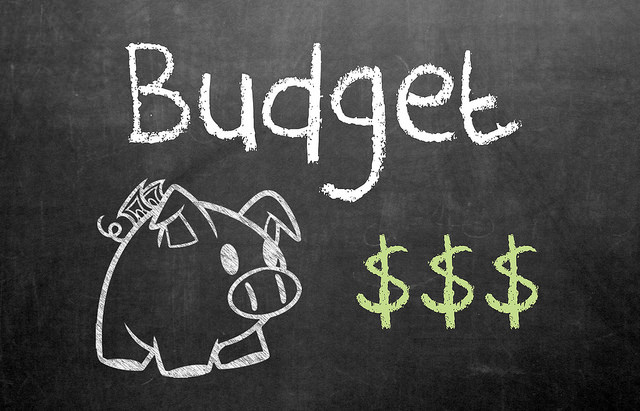Household budgeting is an important part of managing finances. Without a budget, it can be hard to manage where your money is spent efficiently. The lack of a budget is one of the main reasons why many people struggle to live within their means. Beyond the lack of a budget, another potential mistake is to have a misguided budget. Luckily, there are general guidelines for a household budget that breaks down recommended ratios.
Housing Expenses
This portion of the budget tends to be the biggest and most costly. For this reason, it has the highest ratio. Here are some items that you can/should include in your housing expenses.
- Rent/Mortgage
- Taxes
- Insurance
- Home Improvement/Repair
- Utilities - including electricity, gas, water, sewer, trash, telephone
- Cable/Internet*
Your rent/mortgage is going to be the biggest portion here. It should be around 25% of your budget. When you account for all of the expenses listed above, you should be around 30% to 35% of your monthly income at maximum.
* Some people put cable/internet into their housing budget, but others don’t consider them a housing necessity, so they put them in living expenses.

Living Expenses
Your living expenses are a wide encompassing category. This is generally the category where people tend to overspend because there are so many different parts. Your living expenses should take up about 20% of your overall budget. This category includes the following:
- Food/Groceries
- Dining Out
- Entertainment - vacations, movies, fun money, etc.
- Healthcare - medical bills, prescriptions, co-pays
- Clothing/Personal items
- Gifts
- Subscriptions - services such as Netflix, Hulu, Amazon Prime, etc.
- Cable/Internet*
As noted in the household budgeting category, some include cable and internet in the living expenses category because they don’t consider these services as necessities. If you include it in one, don’t do it in the other.
Transportation
We have all to get around in order to run errands, travel, and get to work. This category can be pretty high as well, but that really depends on how/if you are paying for your vehicle. For your transportation budget, you need to make sure you stay at 20% or below. When you are allocating money for your transportation category, you should include the following:
- Lease/Loan payments
- Gas expenses
- Auto insurance
- Maintenance/Repairs
- Public transportation
- Parking costs
- Tolls
As indicated above, you would include your monthly loan/lease payments, but if you don’t have a car but take public transit, then you should include public transportation fees. Another key point to this category is that many people include saving up for another car. If you are looking to buy another car in the future, then you should include that money in this category.
Savings/Debt
It is extremely important to save money and do it every month. This can be hard to do if you are also dealing with debt. After you consider all of the other budgeting categories, then you need to focus on saving and debt repayments. If you have debt, then you need to focus on that first. These are obligations that you need to keep. If you have debt, such as credit card, medical, student loans, or personal loans, then paying them off is imperative. Your debt repayments should account for 15% of overall budget.
Some think saving while paying debt is unnecessary, but it is very important to continue saving. People should consider budgeting money for an emergency fund along with investment savings. If you invest in anything else besides your 401k, then that would go here. You should put 10% of your overall budget toward saving. If you have a hard time saving money, then you need to learn how to save money.
In the situations when you don’t have debt, then you should allocate the 15% for debt repayment to savings. This means you would be saving 25% of your income. Some may argue that this seems high, but if you think about it, it really isn’t. There is no guarantee that Social Security will be around when you retire and when you account for inflation, the cost of living will only continue to increase.
If you still aren’t convinced, look at it this way: would you rather run out of money or have too much? For me, I’d rather play it safe and save more than less.
Final Thoughts
In all, your budget should be broken down to look something close to this:
- 35% Housing
- 20% Living Expenses
- 20% Transportation
- 15% Debt
- 10% Savings (25% if you don’t have debt)
These five budgeting categories should be your main focus. It can be a little more difficult to pin down each sub category within these categories, but as long as you have the overall ratios, then you can work it out. If you have debt and want to pay it off quicker, then you will need to reduce your ratio from another category – housing, transportation or living expenses – but not savings.
Image Source - https://www.flickr.com/photos/jakerust/